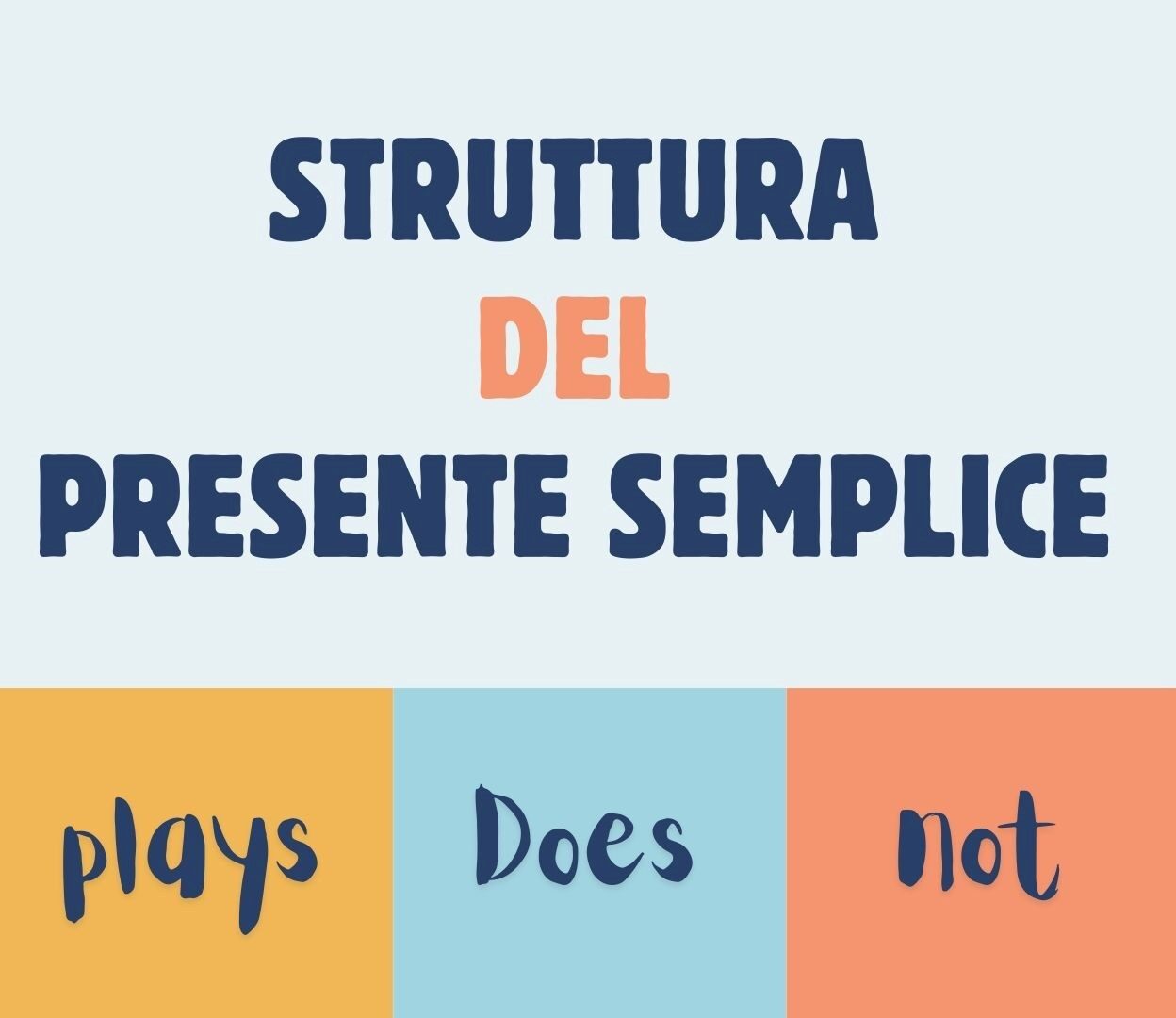Il presente semplice è molto usato in inglese, quindi è molto importante capirlo correttamente. Ma molti studenti di lingue hanno problemi con la forma o con il modo di realizzarla. Prima ne impareremo l’applicazione e poi la struttura.
Si usa il presente semplice:
- Per esprimere abitudini, verità generali, azioni ripetute o situazioni, emozioni e desideri immutabili:
I smoke. Fumo (abitudine)
I work in London. Lavoro a Londra (situazione immutabile)
London is a large city. Londra è una grande città (verità generale).
- Per dare istruzioni o indicazioni:
You walk for two hundred meters, then you turn left. Cammini per duecento metri, poi giri a sinistra.
- Per esprimere accordi fissi, presenti o futuri:
Your exam starts at 09.00. Il tuo esame inizia alle 09:00
- Per esprimere il tempo futuro, dopo alcune congiunzioni: after, when, before, as soon as, until:
He’ll give it to you when you come next Saturday. Te lo darà quando verrai sabato prossimo.
Stai attento! Il Simple Present non viene utilizzato per esprimere azioni che accadono ora. per questo usiamo la forma verbale presente continuo o present continuous.
Present simple come si forma

1.Presente semplice con il verbo Be
Il verbo be (cioè gli stessi verbi di am, is e are) è diverso dagli altri verbi al presente semplice. Diamo un’occhiata per primi:
Ecco la sua forma affermativa (affermativa in questo senso è una frase regolare e non una negativa o una domanda).
| Affermativa | Forma affermativa abbreviate |
| I am | I’m |
| You are | You’re |
| She is | She’s |
| He is | He’s |
| It is | It’s |
| We are | We’re |
| They are | They’re |
Esempi:
- I am Scottish. Sono scozzese.
- I am hungry. Ha fame.
- I am always tired. Sono sempre in ritardo.
Di seguito vedrai anche la sua forma negativa, che è molto semplice e ad essa viene aggiunta una sola not.
| Negative | Forma Negative abbreviata |
| I am not | I’m not |
| You are not | You’re not |
| She is not | She’s not |
| He is not | He’s not |
| It is not | It’s not |
| We are not | We’re not |
| They are not | They’re not |
Esempi:
- I’m not cold. Non ho freddo.
- He isn’t from Spain. Non viene dalla Spagna.
- We aren’t at home. Non siamo a casa.
Infine esamineremo la forma interrogativa del presente semplice con il verbo tobe.
Per prima cosa vediamo insieme il modulo di domanda sì/no:
| Am I…? |
| Are you…? |
| Is she…? |
| Is he…? |
| Is it…? |
| Are we…? |
| Are they…? |
- Am I next in the queue? Sono il prossimo della fila?
- Are you from Tokyo? Sei di Tokio?
- Is he at the library at the moment? È in biblioteca adesso?
Se vuoi fare domande con parole wh, devi solo mettere quella parola davanti alla domanda:
| Where | am I? |
| Who | are you? |
| How | is she? |
| When | is he…? |
| What | is it? |
| Why | are we…? |
| Why | are they? |
Esempi :
- Where are you from? Di dove sei?
- Who is that girl? chi è quella ragazza ?
- Why are they still at work? Perché sono ancora al lavoro?
2.Presente semplice con altri verbi
Il presente semplice si forma allo stesso modo con tutti gli altri verbi
La forma positiva è molto semplice. L’unica cosa che devi ricordare è che per formare la terza persona singolare (She, he, it) del presente semplice devi aggiungere la -s alla fine. Prendiamo ora come esempio il verbo play:
Modalità di play affermativa
| I play |
| You paly |
| She plays |
| He plays |
| It plays |
| We play |
| They play |
la formula per creare una frase affermative simple present è: oggetto + verbo + s (solo per la terza persona singolare)
Esempi:
- I play tennis every week. Gioco a tennis ogni settimana.
- He likes chocolate. Gli piace il cioccolato
- They usually go to the cinema on Fridays. Di solito vanno al cinema il venerdì
- Non dimenticare la “s”! Un errore commesso anche dagli studenti di lingue avanzati!
- Se il verbo termina in y, aggiungendo s, la desinenza del verbo cambia da y a ies. Ad esempio, study diventa studies.
Eccezione: se c’è una vocale prima di -y:
Gioca –> gioca, prega –> prega
- Aggiungi -es ai verbi che terminano in:-ss, -x, -sh, -ch:
he passes, she catches, he fixes, it pushes
- Ci sono alcuni verbi irregolari al presente semplice:
- have diventa has
- do diventa does
- go diventa goes
Per creare la forma negativa, dovresti usare (do not (don’t)) o (does not (does not)).
Forma di play negative
| I do not play | I don’t play |
| You do not play | You don’t play |
| He does not play | He doesn’t play |
| She does not play | She doesn’t play |
| It does not play | It doesn’t play |
| We do not play | We don’t play |
| They do not play | They don’t play |
la formula per creare una frase negative simple present è: soggetto + do/does + not + forma base del verbo
Esempi:
- You don’t study very much. Non studi molto
- Julie doesn’t like sport. Julie non è interessata allo sport
- We don’t live in London. Non viviamo a Londra
Ma che dire dell’attuale semplice modulo di domanda?
Usiamo do o does prima del soggetto per fare una domanda sì/no:
| do I play ? |
| do you play ? |
| does he play ? |
| does she play ? |
| does it play ? |
| do we play ? |
| do they play ? |
la formula per creare una frase introgative simple present è: do/does + soggetto + forma base del verbo
Esempi :
- Do you work in an office? Lavori in ufficio?
- Does John play cricket every weekend? John gioca a cricket ogni fine settimana?
- Do they like travelling? A loro piace viaggiare?
Proprio come be, se vuoi fare una domanda con le parole wh, devi solo anteporre la parola interrogativa:
| Where | do I play ? |
| What | do you play ? |
| Why | does he play ? |
| Who | does she play ? |
| When | do we play ? |
| How | do they play ? |
la formula per creare una frase introgative simple present con wh- è: wh- +do/does + soggetto + forma base del verbo
Esempi :
- Where do you live? dove vivi?
- What does she like to eat? Cosa gli piace mangiare?
- Why do they work so hard? Perché lavorano così duramente?
Conclusione
although simple present is a basic grammar it is used in many different situations. Ora che hai letto tutto sulla spiegazione del presente semplice, potresti unirti a noi nelle nostre lezioni di inglese online per comprendere meglio le frasi con il presente semplice e altre grammaticali diverse.
FAQ
Quando si usa il present simple?
- Per esprimere abitudini, verità generali, azioni ripetute o situazioni, emozioni e desideri immutabili.
- Per dare istruzioni o indicazioni.
- Per esprimere accordi fissi, presenti o future.
- Per esprimere il tempo futuro, dopo alcune congiunzioni: after, when, before, as soon as, until.








